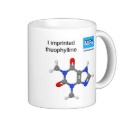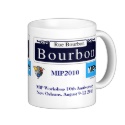|
|
Reference type: Journal
Authors: Ichinose I, Kunitake T
Article Title: Wrapping and inclusion of organic molecules with ultrathin, amorphous metal oxide films.
Publication date: 2002
Journal: Chemical Record
Volume: 2
Issue: (5)
Page numbers: 339-351.
DOI: 10.1002/tcr.10032
Abstract: In this review, we overview metal oxide nanostructures in which organic molecules play important roles as templates, as structural units, and, in some cases, as hosts. Their structural precision and diversity are discussed from the viewpoint of the topology of a metal-oxygen network. Supramolecular capsules of metal oxides are prepared by the self-assembly of polyoxometalates. Zeolites and mesoporous materials are synthesized by using organic molecules with their assemblies acting as templates. The topological networking of silsesquioxanes makes it possible to produce novel nanocomposites and microporous materials. In the final section, we demonstrate our recent studies into molecular imprinting, the encapsulation of a fluorescent dye, and the wrapping of individual polymer chains. Ultrathin, amorphous metal oxide films can retain the shape of organic molecules and can be used to create molecular composites by precisely wrapping individual molecules. These films are also effective in insulating molecular functions from external environments. The advantages of amorphous metal oxides are discussed in relation to the properties of the corresponding crystalline metal oxides and their potential prospects in nanotechnology. (C) 2002 The Japan Chemical Journal Forum and Wiley Periodicals, Inc
|


 Element 73 tie - Tantalum tie say Ta with a tie
Element 73 tie - Tantalum tie say Ta with a tie







 theophylline template mug ball and stick
theophylline template mug ball and stick







 MIP2010 10th Anniversary mug
MIP2010 10th Anniversary mug






